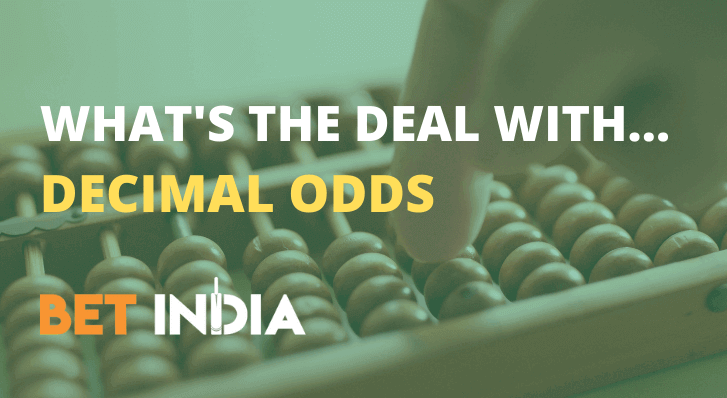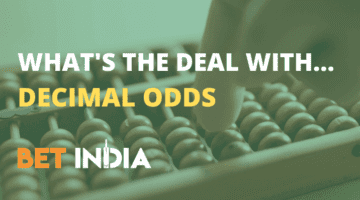What are decimal odds?
Decimal odds were introduced in the early 2000s to replace the traditional fractional odds that had been used mostly by UK-based betting sites up to that point.
They’re now the type of odds used by the vast majority of betting sites, though in most cases you can convert odds shown on a betting market to fractional or american odds if users prefer to use those instead.
Odds-on decimal odds
In decimal odds, all odds that are shorter than 2.0, eg, 1.8, are odds-on chances meaning that a) they are deemed to have a greater chance than 50% of winning and b) are odds where you need to bet more than what you can win.
So for example, if you bet 100 Rupees on a 1.8 chance, you’d win less as profit (80 Rupees) than what you’re willing to risk.
Odds-against decimal odds
Alternatively, if you bet at decimal odds greater than 2.0, they’re odds-against and you win more than you’re willing to risk. For example, betting 100 Rupees on a 3.0 chance (2/1) would win you 200 Rupees profit if the bet wins.
In decimal odds, a bet that has exactly a 50/50 chance of winning is expressed as 2.0, known as ‘evens’ or ‘even money’ in fractional odds.
How to use decimal odds
As we said above, your starting point should be the number 2.0. Bigger and it’s odds-against, smaller and it’s an odds-on chance.
One of the reasons decimal odds were introduced is that they already include your stake when calculating how much you can win from the bet.
If you bet 100 Rupees on something at 5.0, then your payout would be 500 Rupees. Customers should be aware that this means you get your 100 Rupees back, while the other 400 Rupees would be profit.
So a 5.0 chance is actually a 4/1 shot, a 10.0 shot is 9/1, a 25.0 bet is at odds of 24/1 and so on.
In other words, you need to subtract 1 (which represents your stake) from the decimal odds to get the number you’ll win at.
Not all decimal odds are nice, round figures, though. But the principle is the same; If you placed a bet at 2.8 for 100 Rupees, you’d win 180 plus of course, your initial 100.
Did you know?
Tic-tac is a form of sign language used by bookies to communicate the odds on horses during a race meeting.
They involve people using hand signals to represent different odds. But they’ve gone out of fashion recently, with the move to decimal odds and online betting substituting the more traditional forms of betting.
What was interesting is that some fractional odds were replaced by expressions using Cockney slang and backslang, relating to how the odds sounded.
So for example ‘Burlington Bertie’ meant 100/30, ‘Major Sevens’ meant evens and ‘century’ referred to 100/1.





